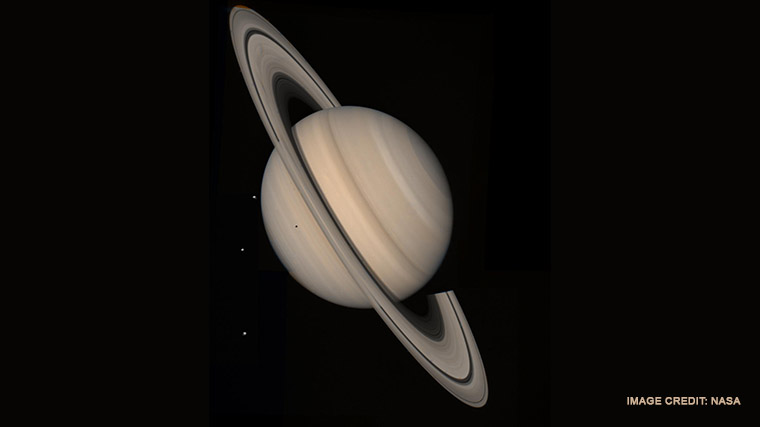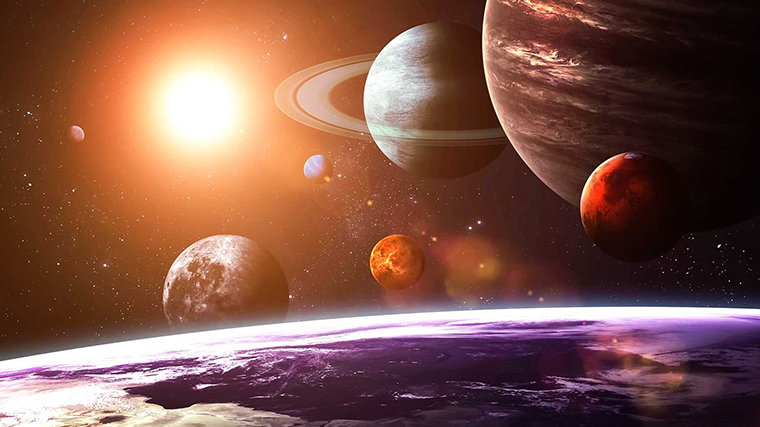Gas giants such as Jupiter, Saturn, Uranus, and Neptune in the solar system are composed primarily of gases such as hydrogen and helium, with a small, rocky core. They are called “Jovian planets” or gas giants. The term “Jupiter” is now also used for exoplanets with a mass comparable to Jupiter discovered outside the solar system. The solar system’s gas giants lie far beyond the orbit of Mars and the asteroid belt, and although they are similar, each pair of planets (Jupiter and Saturn, Uranus and Neptune) has its unique features and composition.
Why was it called that?
The term “gas giant” first appeared in a 1952 science fiction novel by James Blish. At that time, no planets had been discovered outside our solar system, and no spacecraft had been sent into space. At that time, information about the planets was based on telescopic observations and astronomical theories, and computer models were just beginning to be developed.
The first flyby of the gas giant Jupiter took place in 1972 thanks to the Pioneer 10 spacecraft. The first exoplanets were discovered in 1992 around the pulsar PSR 1257+12.
Why are gas giants only now attracting attention?
The study of gas giants has become more relevant after the discovery of many gaseous exoplanets. Scientists have been focusing in recent years on analyzing gas giant rings and the origin of auroras. Many exoplanets found around other stars have unique characteristics that differ from planets in our solar system. There is a vast amount of exoplanet data collected by various observatories, including TESS, Kepler, and the European Southern Observatory, and more than 5,000 exoplanets have been discovered so far, most of which are gas giants.
Current Research
Jupiter
In 2016, NASA’s Juno spacecraft reached the planet Jupiter, adding to many other studies, including those conducted by the Hubble Space Telescope. Juno conducted a unique study of Jupiter’s rings, which is challenging because they are incredibly thin, unlike Saturn’s ring system. The device also analyzes the planet’s auroras, trying to reveal their sources and differences from other planets, and examines the clouds in it. Scientists are also monitoring changes in the behavior of the Great Red Spot, a persistent storm system in the planet’s southern hemisphere that appears to be changing its size.
Previous missions that provided data on Jupiter:
the space probe “Pioneer-11” in 1974,
the Cassini spacecraft in 2000,
the spacecraft Galileo from 1995 to 2003.
Saturn
In 2017, the Cassini spacecraft completed twelve years of exploration of Saturn. However, the scientific work started by Cassini continues as scientists continue to analyze the vast amount of data collected during the mission. This device used Saturn’s rings to study gravitational interactions on the planet and sparked interest among scientists in Saturn’s icy moons, where conditions for life may exist.
Previous missions that provided data on Saturn:
the space probe “Pioneer-11” in 1979,
the space probe Voyager 1 and Voyager 2 in 1980 and 1981, respectively.
Uranus
Uranian storms attract the attention of both professional astronomers and amateurs, who diligently monitor their evolution and changes. As researchers uncover the planet’s secrets, they also seek to understand the composition of its rings and atmosphere. Recent scientific research has focused on the weather in the atmosphere of Uranus and the Trojan asteroids surrounding the planet.
To date, exploration of Uranus has been carried out using telescopes and a single probe from NASA’s Voyager 2 spacecraft, which made its closest approach to Uranus on January 24, 1986.
Neptune
An illustration of the Voyager 2 probe showing it passing Neptune in 1989. Photo: STEVEN HOBBS / NOVAPIX / AFP
Storms on Neptune have also attracted the attention of researchers, and in 2018 they again provided interesting results. Observations from the Hubble Space Telescope have shown that the long-awaited storm on the planet has begun to subside. However, scientists found that this storm’s dissipation process did not match their previous models, indicating that our understanding of Neptune’s atmosphere still needs to be refined.
Neptune was directly explored by one space probe, Voyager 2, in 1989.
Banner image:
Lunar and Planetary Institute
Image credit:
https://www.universetoday.com
https://solarsystem.nasa.gov
https://www.rnz.co.nz






